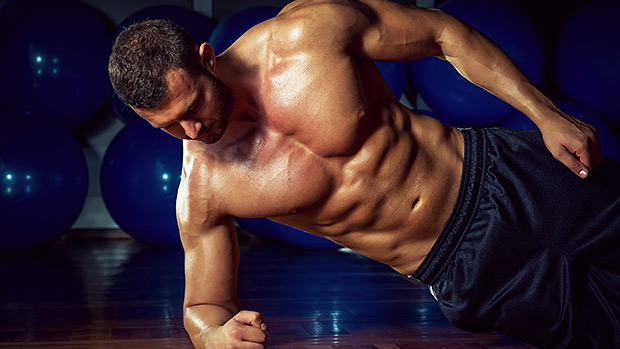One of the most frustrating things for any lifter is being stiff or sore all the time. You have impressive numbers and you look good, but between training sessions you feel like you're made of stone. You don't feel strong; you feel slow and uncomfortable.
This is really important to me as both a lifter and a coach. If you feel like rubbish, it'll take the fun out of training. Over time, you might find it hard to stay motivated.
The first two things to check are pretty obvious:
Your technique: Are you lifting properly, using the right muscles for each lift, and not looking like some sort of gym-fail just waiting to appear on YouTube?
Your flexibility: Do you have any restrictions that you're refusing to address? I'm sorry, but those rounded shoulders are not just a consequence of your "pump," brah.
So if your technique is fine and your flexibility is actually pretty good, then what could be wrong?
It's Your Core!
Before deciding that feeling beaten up is just part of lifting, or that you're just meant to have a physiotherapist on call, check your core.
No, I don't mean abs. I mean your core: the entire muscular system that enables your torso to move, generates force, and keeps everything stable. Your ability to engage your core and move your hips at the same time is crucial to a strong, pain-free body.
The two tests you'll see here check your core – first with hip abduction and then with hip extension. Each requires different, but essential, core muscle groups to work together. Failure to pass either can point to all kinds of issues, from twisting when you squat or deadlift, to getting constant back pain during or after training no matter the intensity.
Get yourself on video performing both tests, because often what you think you're doing and what you're actually doing are two different things.
Test One – Lateral Core Stability With Abduction
Can your body support itself in a side plank with tension in the core and the muscles of your hip? That ability is kind of handy for... well, everything. Here's what to do:
- Lie down on one side with your feet slightly staggered (one in front of the other) and extend your body out as long as you can.
- Supporting yourself with your elbow directly under your shoulder, engage your obliques and lift yourself up into a side plank.
- Make sure your body is in good alignment – no bending or sagging at the hips.
- If the side plank is okay, maintain a solid position and lift your top leg up to parallel with the ground.
- Repeat on the other side.
Do your hips drop when you lift your leg? Even a little? Or can you lift your leg without anything else changing? Is it the same on both sides, or do you have one side that outperforms the other?
If you don't find this challenging and can hold this position for 30 seconds or more, you pass!
If your hips drop or you start shaking and sweating like a powerlifter on a spin bike, then you fail.
But don't worry, this is a good thing – we've found your weakness. This is especially telling if you only fail on one side. It points to a strength imbalance that can often cause pain or constant tightness either on the same side or the opposite side. Working on regressions from your knee will build up the strength you need to eventually pass.
Test Two – Unilateral Hip Extension
Next you want to check how well your glutes support your pelvis on each side. You can do as many glute exercises as you like, but if you fail this test you have big problems! Here's what to do:
- Lie on the floor with your knees up and your feet flat.
- Lift your hips up and squeeze your glutes hard.
- Slowly lift one foot off the ground and extend your leg out. Don't let your hips drop or twist.
- Replace the foot and repeat on the other side.
Like our first test, if your hips stayed extended, you didn't find either side challenging, and could easily hold each for 30 or more seconds, then you passed!
However, if you had to bend your hips, one side dropped or twisted as you lifted your leg, or you struggled to hold for even 10 seconds, then you failed.
Often you'll find that the hips initially drop, but then you can quickly correct that and proceed to hold the position for 30 seconds. This points to your muscles "working" but not exactly in the right order.
You can engage your glutes, but they just aren't switching on exactly when you need them to. This small blip is enough to cause shifting to one side or even injury if left unchecked.
If you fail this on one or both sides, reduce how far you lift your leg until you find a point at which you can maintain your hip height. Practice just by lifting one leg off slowly at a time.
The side plank test and glute bridge test are two VERY important tests of our basic abilities. You can easily add these two exercises to your warm-ups. Don't let missing out on simple principles (that could be easily improved) be the reason you don't achieve your goals.





